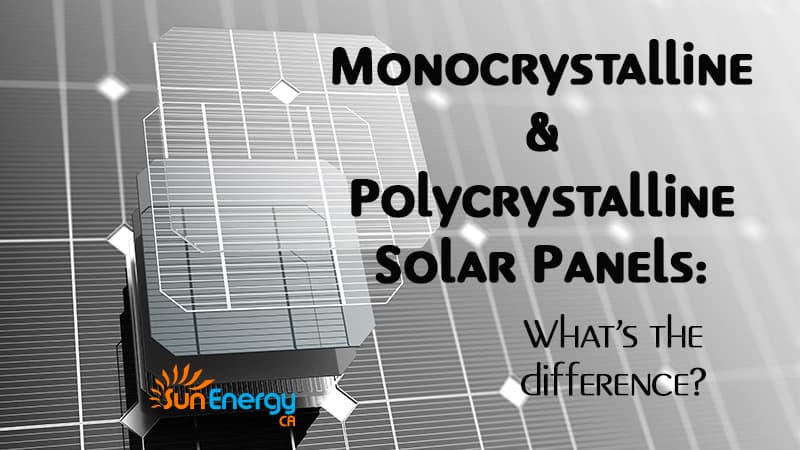What is the Difference Between Monocrystalline and Polycrystalline Solar Panels?
Thinking about going solar? During this process you’ll most likely be asked about the two main categories of options when it comes to the type of solar panels. Those two options are monocrystalline (commonly referred to “mono”) and polycrystalline (also called “poly”). Both of these work like you would expect, by producing energy from the sun. However, there are some important distinctions that you should know before making the best decision for you and your family. Ready to break it down? Here we go!
Monocrystalline Solar Panels
Monocrystalline solar panels are the fancy-schmancy (top-choice, grade A, however you want to say it) ones. These are considered the premium solar option and they are generally more expensive than the poly. The primary benefits of “going mono” (we’ll go ahead and coin that term) are the higher efficiency and sleeker aesthetics.
To produce these bad boys they use silicon that is formed into bars and cut in wafers (we’re getting Kitt-Katt vibes, anyone else?). The reason why they are called monocrystalline is because the silicon they use is only SINGLE-crystal silicon. Because the cells are single-crystal, the electrons that generate the electricity have more space to move resulting in more efficient output than ol’ poly over there.
Polycrystalline Solar Panels
Polycrystalline panels typically have lower efficiency than monocrystalline, however they are not nearly as expensive. Have you ever seen the blue solar panels? This blue hue is indicative of polycrystalline panels (the monocrystalline panels are more of a black hue). Polycrystalline, like mono, are also made of silicon but instead of a single crystal of silicon, the production uses many pieces of silicon that are melted together to form the wafers for the panel. Some folks refer to these panels as “multi-crystalline”. Because there is more silicon in polycrystalline, the electrons don’t have as much space to move, resulting in lower efficiency.
Monocrystalline and Polycrystalline Similarities
Both of these types of solar panels do the same thing essentially, by harnessing the sun and turning its energy into electricity. They also use the same materials in production, like silicon. Silicon is a material that is abundant and extremely durable, making it a great component of solar panels. Both of these solar panels have a lifespan of 25+ years and no matter if you choose monocrystalline or polycrystalline solar panels, you will still be saving significant amounts on your electricity bills.
Which type is right for you and your family?
Like we mentioned earlier, it’s always best to ensure you have all the information you need during this decision making process. Being an informed buyer is an integral part of investing in solar energy. Deciding between monocrystalline or polycrystalline really comes down to your personal preferences, the amount of space you have on your roof, and how you plan to finance your system.
Bright Solar Power California has many solar financing options to choose from. We offer PPA (power purchase agreement), either monthly PPA or Prepaid PPA, we also offer a loan financing with zero dollars down. For more information on solar panel options, equipment questions, or if you would like a free consultation and estimate – reach out to one of our solar advisors at 760-545-5466 or through our website at https://brightsolarpower.io/contact-us/.
Thanks for reading!

